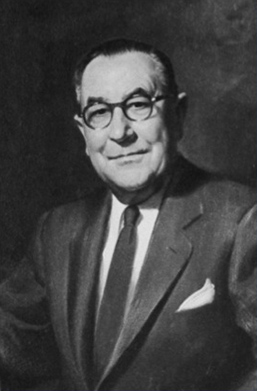
Lansing Chapman was born in 1888, educated at Williams College, and, on graduation in 1910, went into the expanding advertising business. He sold space for trade publications and then moved to the client side, becoming advertising manager for Becton Dickinson. There he became involved in medical marketing.
In 1918, he identified a need in the marketplace. Physician income in America was on the rise, but doctors were not prepared as business people for their new wealth or growing practices. A publication dedicated to serving this audience with financial information and management advice had potential. Chapman worked on the idea by himself and then, fortunately, found the ideal collaborator—Dr. H. Sheridan Baketel, a practicing physician who had worked as a medical director for a pharmaceutical company and, most importantly, had experimented with teaching young doctors the business aspects of medicine. Chapman and Baketel capitalized their venture with $4,000 each and the first issues of Medical Economics were sent free to physicians in October 1923. It ran 48 pages with 17 advertisements.
Reception among physicians was positive, but critical voices challenged Medical Economics on two fronts. Spokesmen for organized medicine, the publishers of clinical journals, found fault with Medical Economics’ financial orientation, preferring doctors as scientists and not businessmen. Additionally, Medical Economics’ “controlled circulation” distribution and its reliance on advertising was said to foster, as one critic put it, a “cash above conscience” editorial policy.
Neither critique has stood the test of time. Medical Economics will celebrate its 85th year of publication in 2008—a testament to Chapman and Baketel’s vision of what the publication could become.
Medical Economics pursued its editorial direction through the Depression years of the 1930s and the war years of the 1940s, giving doctors practical advice and information on how to manage their practices in these changing social settings.
After World War II, when pharmaceutical marketing suddenly became a major promotional arena, the publication truly prospered. Medical Economics became a basic building block in advertising programs for the antibiotics, steroids, psychotropics, and antidiabetics that came on the scene to revolutionize the practice of medicine. Medical Economics was a must on every journal schedule.
Chapman responded to the burgeoning of pharmaceutical advertising with innovations to keep Medical Economics in a leadership position. He established an in-house research department that conducted pre- and post-studies of the publication’s features and news articles. He also was the first to provide advertisers with readership data. He expanded the reach of the company by adding new titles to its publishing base.
Lansing Chapman died in 1960. He lived long enough to see his creation become fabulously successful financially and highly admired in publication circles for its editorial excellence. In his later years, he was active in business press trade organizations and played a role in raising the standard in medical publishing. He passed the torch on to his son, Bill Chapman, who demonstrated that a sound idea has limitless possibilities by greatly expanding the company’s scope of operations and maintaining its position as a leader in publications serving healthcare audiences.